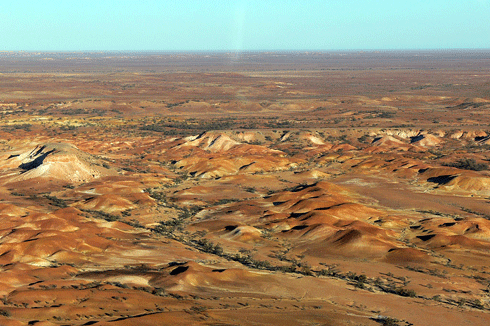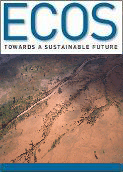
|
Published: 12 November 2012
Deserts hold ‘vast’ green energy prospects: report
A new study suggests that outback Australia has great potential for renewable energy production and carbon sequestration.

|
|
Remote Australia could be used to produce renewable energy for domestic use, for supply to coastal regions and possibly even to East Asia. Credit:
Neerav Bhatt/flickr (CC BY-NC-SA 2.0)
|
The study, ‘Climate Change Adaptation, Energy Futures and Carbon Economies in Remote Australia’, has found that climate and other changes will bring both great challenges and opportunities to Australians living in remote regions. The study was carried out for the CRC for Remote Economic Participation (CRC-REP) in partnership with CSIRO.
‘The report clearly identifies a number of great challenges – and equally great opportunities – for remote Australians, as well as some important gaps in our understanding if we are to take full advantage of them,’ said Dr Digby Race, CRC-REP climate and energy research leader.
‘It is these gaps which CRC-REP’s research will be targeting in order to make life more prosperous, healthy, sustainable and safer for remote Australians as conditions change through this century.’
Remote Australia is expected to become hotter, particularly in inland regions. It will experience more intense and frequent droughts, heatwaves and fires as well as more intense storms, floods, rainfall events and tropical cyclones. However fine-scale climate predictions have yet to be developed for most remote areas.
These weather changes are likely to increase the challenges faced by remote communities, making it harder to ‘close the gap’ between Aboriginal and Torres Strait Islander people and other Australians.
However national moves to lock up carbon will create new livelihoods and enterprises for people living in remote areas, through greater demand for landscape and vegetation management.
‘Aboriginal and Torres Strait Islander people may also be able to build on their knowledge, skills and customary practices of caring for country,’ the report says.
Currently remote Australia is highly dependent on fossil fuels. However a shift towards renewable energy production and transmission from remote Australia ‘would contribute to the shift to a low-carbon economy and enhance employment, livelihoods and wider development in remote Australia’.
The study finds not enough is known about how living conditions in the Outback are likely to change as the climate warms, but weather damage to infrastructure may disrupt long-distance transport and affect tourism.
‘In remote Australia, there is vast potential for generating alternative renewable energy including from solar, geothermal, wind and tidal sources.’ However, the study cautions that little is known about the economics of such ventures and, in the short term, increasing demand for energy is likely to outstrip supply from alternative sources even though these are becoming more efficient.
A broader cost-benefit analysis is necessary to assess the associated employment, environmental and health benefits.
The study suggests that the introduction of carbon pricing may create a range of opportunities for carbon sequestration over the very large area of remote Australia – however these are likely to vary greatly with the landscape and are not yet well understood.
Control of feral animals, better management of cattle, restoration of degraded areas and tree planting are thought to offer scope to lock up carbon.
The report also notes that, despite some progress, there are still some gaps in Government policies in coping with the speed, scale and risks of climate change or how communities can adapt to it – and that many people are confused by current federal and state policies.
Source: Ninti One Ltd



